
Nuclear Cardiology, The Basics
10,480.00₹ 4,490.00₹
The purpose of this book is to provide the outline for the “nuts and bolts” establishment and operation of a nuclear cardiology laboratory. In so doing, the authors have attempted to deal with the relevant issues that a laboratory director must address in either setting up the laboratory or maintaining its competitive edge and clinical competence over time. The authors primarily attempted to identify issues related to outpatient imaging facilities. However, where appropriate issues related to inpatients in hospital-based laboratories are also discussed.
In this new edition, the authors have kept the basic format established in the first edition. In addition to reviewing, modifying and updating each chapter in the first edition, they have added entirely new chapters on PET imaging, hybrid imaging and the clinical appropriateness of nuclear cardiology procedures.

Clinical Brain Mapping
12,900.00₹ 7,900.00₹
This profusely illustrated, concise, yet detailed sourcebook enables both neurosurgeons and neurologists to map functions to specific cognitive and sensory locations in the brain. Clinical Brain Mapping takes you step by step through the methods and functional bases of the techniques, focusing on all clinical situations that require cerebral localization for diagnosis and therapeutic management.
Clinical Brain Mapping is cohesively organized into two sections: Techniques and Systems. The first section covers the full scope of methods for determining cerebral location, from the classic Wada test to the newest fMRI and magnetoencephalography procedures. In the Systems section, expert contributors offer key insights into the systems that are mapped with a multi-modality approach, covering somatomotor and somatosensory function, language, vision, hearing, and memory. The book concludes with informative chapters on specific applications of mapping techniques.
FEATURES
- 350 radiologic images and EEG tracings show each brain mapping technique, adding depth and clarity to chapter material
- Multi-modal approach focuses on a wide array of clinical concerns and corresponding methods, including: Operative anatomy and structural neuroimaging; Functional MRI and magnetoencephalography; Optical imaging; Neuropsychological testing and the Wada test; Extraoperative brain mapping; Electrocorticographic spectral analysis
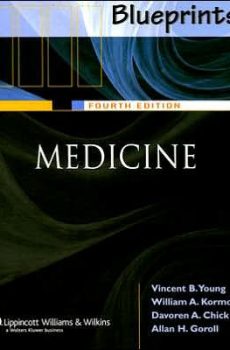
Medicine (Blueprint)
2,450.00₹ 1,090.00₹
More than just a Board review for USMLE Steps 2 and 3, “Blueprints Medicine, Fourth Edition” can help you during clerkship rotations and subinternship. This popular “Blueprints” book has been refined and updated while keeping the concise, organized style and clinical high-yield content of previous editions. Features include: USMLE-style questions and answers with full explanations; Key Points in every section; and a color-enhanced design that increases the usefulness of figures and tables. This edition’s art program has been thoroughly updated. Each chapter in this edition ends with evidence-based references (journals) for students to do additional reading/research.
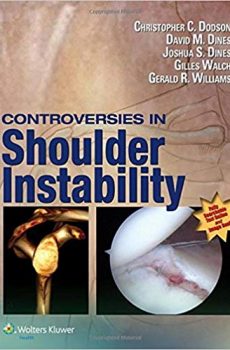
Controversies in Shoulder Instability
19,900.00₹ 5,900.00₹
Shoulder instability can result from a variety of causes—including bone loss, lesions, and trauma, particularly repetitive motion injuries associated with sports. This practical resource addresses the full scope of shoulder injury diagnosis and management—from anatomy and natural history, to injury classification and both surgical and nonsurgical management options.
- Emphasis on current controversiesallows readers to weigh opposing viewpoints and choose the best management strategy for first-time dislocators, multi-directional shoulder instability, stabilization of injuries in a contact athlete, management of SLAP tears, treatment of shoulder injuries in the elderly, and more!
• Multiple techniques are presented for key disorders allowing readers to select the most appropriate management strategy for each patient.
• Step–by–step coverage of each procedureensures proper technique, minimizes error, optimizes results, and reduces post-surgical recovery times.
• Helpful illustrations highlight key concepts from the text.

The Song of the Lark
1,590.00₹ 1,090.00₹
Willa Cather’s third novel, The Song of the Lark, depicts the growth of an artist, singer Thea Kronborg, a character inspired by the Swedish-born immigrant and renowned Wagnerian soprano Olive Fremstad. Thea’s early life, however, has much in common with Cather’s own.
Set from 1885 to 1909, the novel traces Thea’s long journey from her fictional hometown of Moonstone, Colorado, to her source of inspiration in the Southwest, and to New York and the Metropolitan Opera House. As she makes her way in the world from an unlikely background, Thea distills all her experiences and relationships into the power and passion of her singing, despite the cost. The Song of the Lark presents Cather’s vision of a true artist.

Quebee Hydropolitics
2,295.00₹ 1,695.00₹
The construction in the 1940s of hydroelectric dams and reservoirs, Lakes Manouan and Passe Dangereuse, were enormous projects that had consequences not only on the environment but also on international affairs. Built by the Aluminium Company of Canada (Rio Tinto Alcan), the project helped meet the American and Allied Forces demand for electrical power and aluminium ingot during the Second World War but also forced Innu/Montagnais hunter-trappers from their ancestral lands. Examining sources as varied as the papers of the Franklin D. Roosevelt Presidential Library and interviews with Montagnais elders, Quebec Hydropolitics presents a compelling synthesis of business and social history as well as wartime politics. David Massell reconstructs the story of a changing landscape through the perspectives of corporate executives, government officials, and Aboriginals to show the effect that war had on Canadian resource extraction and energy policy as well as its indigenous peoples. A narrative that flows from the Saguenay watershed to the centres of political power, Quebec Hydropolitics is an informative look at the costs and benefits of large-scale industrialization.
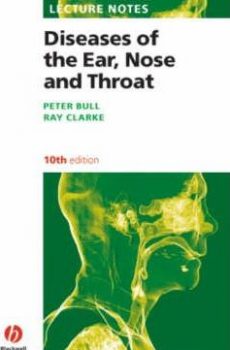
Diseases of the Ear, Nose & Throat
3,090.00₹ 1,595.00₹
Highly Commended in the ENT category at the British Medical Association Book Awards 2008
Lecture Notes: Diseases of the Ear, Nose and Throat, now in its tenth edition, is an ideal learning aid covering the core principles of this important specialty. With concise chapters, this text is renowned for its brevity, clarity and lavish illustrations. This edition has been thoroughly revised and rewritten to reflect the latest developments in the specialty and contemporary curriculum, and features:
- New material on otitis media, tonsils, voice disorders, head and neck cancer and obstructive sleep apnoea
- Coverage of relevant basic science at a level to assist the student to fully understand the clinical topic
- Clinical Practice Points which provide nuggets of wisdom about patient management
- Over 200 self-assessment questions to aid revision and understanding
- Emphasis on sensible primary-care management of common presentations
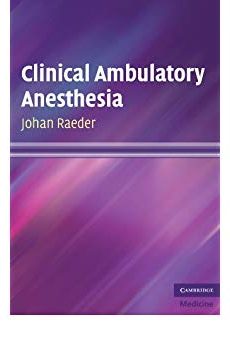
Clinical Ambulatory Anesthesia
5,395.00₹ 2,195.00₹
Ambulatory care can be a challenging setting in which to provide anesthesia – not all patients are suitable for rapid discharge post-operatively and opinions differ as to which types of surgery should be performed as day cases. This comprehensive guide delivers up-to-date, evidence-based advice on how to provide optimal anesthesia care for ambulatory surgery. Written by a leading clinical anesthesiologist, it provides clear guidance about how to handle particular patients in particular situations. The evidence and scientific knowledge for each issue are presented with reference to major studies and review papers, followed by practical advice based on the author’s continuous clinical and scientific experience over 30 years. Topics include planning, equipping and staffing ambulatory units, pharmacology, basic concepts of ambulatory care, pre- and post-operative issues and current controversies. Clinical Ambulatory Anesthesia is essential reading for the clinical, postgraduate anesthesiologist as well as nurse anesthetists involved with ambulatory care.
- Provides up-to-date guidance to enable best practice and promote optimal care
- Specialised advice will allow clinicians to work confidently in situations unique to ambulatory anesthesia
- Provides specific recommendations on how to proceed in controversial and difficult areas
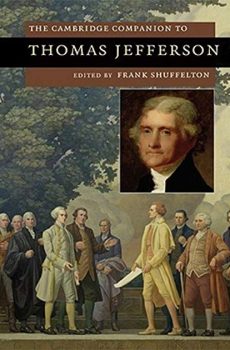
The Cambridge Companion to Thomas Jefferson
1,540.00₹ 1,195.00₹
This Companion forms an accessible introduction to the life and work of Thomas Jefferson, third President of the United States and author of the Declaration of Independence. Essays explore Jefferson’s political thought, his policies towards Native Americans, his attitude to race and slavery, as well as his interests in science, architecture, religion and education. Contributors include leading literary scholars and historians; the essays offer up to date overviews of his many interests, his friendships and his legacy. Together, they reveal his importance in the cultural and political life of early America. At the same time these original essays speak to abiding modern concerns about American culture and Jefferson’s place in it. This Companion will be essential reading for students and scholars of Jefferson, and is designed for use by students of American literature and American history.
- An overview of Jefferson’s life, career, and afterlife as a central figure of early American history
- A useful tool for students of American history, politics and culture
- Includes a chronology and guide to further reading

The Merchant’s Prologue and Tale
1,190.00₹ 895.00₹
Six-hundred-year-old tales with modern relevance. As well as the complete text of the Merchant’s Prologue and Tale, the student will find illustrated information on Chaucer’s world, including a map of the Canterbury pilgrimage, a running synopsis of the action, an explanation of unfamiliar words, and a wide range of classroom-tested activities to help bring the text to life. Guided by the suggestions for study and the wide range of helpful information, students will readily appreciate Chaucer’s wit and sense of irony, his love of controversy and his delight in character portrayal.

Paradise Lost books 1-11
2,065.00₹ 995.00₹
A collection of anthologies, resource and reference books, including titles from Oscar Wilde, Mary Shelley, Alex Madina, Jo Phillips and Adrian Barlow.
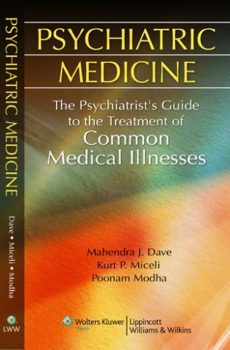
Psychiatric Medicine
3,590.00₹ 1,190.00₹
This handbook is a concise, portable ready reference for diagnosing and treating common medical illnesses encountered in psychiatric patients, particularly those in an inpatient service. The first section explains laboratory tests used to diagnose medical illness. The second section covers 59 medical symptoms and diseases. The third section focuses on important syndromes which have specific psychiatric manifestations or are caused by psychotropic drugs.
Particular attention is given to basic understanding of lab tests and drug dosing. “Pearls” and “pointers” increase the book’s utility. Appendices offer guidelines on monitoring for psychiatric medications and list key medical abbreviations.

Social Justice
1,120.00₹ 890.00₹
How do we expand health care coverage to more Americans? Are hate crimes legislation and affirmative action fair? What sacrifices must we make to protect the environment? Is the death penalty morally acceptable? Contributors include Jill Jacobs, of Jewish Funds for Justice; Arthur Waskow, director of The Shalom Center; and TV commentator and UCLA law professor Laurie Levenson. Each volume in this series presents hypothetical cases on specific topics, followed by traditional and contemporary sources. Supplementing these are brief essays, written by contributors of various ages, backgrounds, and viewpoints to provoke lively thought and discussion. These voices from Jewish tradition and today’s Jewish community present us with new questions and perspectives, encouraging us to consider our own moral choices in a new light.

Wal-Mart Wars
1,820.00₹ 1,290.00₹
Wal-Mart is America’s largest retailer. The national chain of stores is a powerful stand-in of both the promise and perils of free market capitalism. Yet it is also often the target of public outcry for its labor practices, to say nothing of class-action lawsuits, and a central symbol in America’s increasingly polarized political discourse over consumption, capitalism and government regulations. In many ways the battle over Wal-Mart is the battle between “Main Street” and “Wall Street” as the fate of workers under globalization and the ability of the private market to effectively distribute precious goods like health care take center stage.
In Wal-Mart Wars, Rebekah Massengill shows that the economic debates are not about dollars and cents, but instead represent a conflict over the deployment of deeper symbolic ideas about freedom, community, family, and citizenship. Wal-Mart Wars argues that the family is not just a culture wars issue to be debated with regard to same-sex marriage or the limits of abortion rights; rather, the family is also an idea that shapes the ways in which both conservative and progressive activists talk about economic issues, and in the process, construct different moral frameworks for evaluating capitalism and its most troubling inequalities. With particular attention to political activism and the role of big business to the overall economy, Massengill shows that the fight over the practices of this multi-billion dollar corporation can provide us with important insight into the dreams and realities of American capitalism.
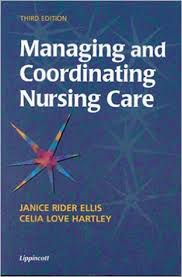
Managing and Coordinating Nursing Care
2,910.00₹ 1,295.00₹
Designed to teach students to apply effective decision-making, budgeting, and general patient management skills to real-world practice situations, this hands-on text uses a direct approach to this fundamental area of nursing practice. Emphasis on critical thinking and collaborative decision making makes this an ideal resource for students seeking to build problem-solving and management abilities. The text also discusses ways in which the nurse’s role is affected by today’s changing healthcare system. Objectives, key terms, and key concepts are included to aid in review.
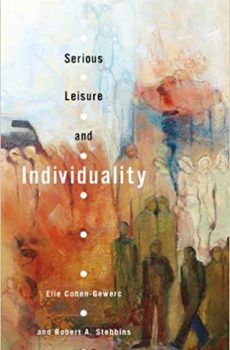
Serious, leisure and individuality
6,490.00₹ 2,990.00₹
What does it mean to be an individual and how can an individual exist within society? Serious Leisure and Individuality examines the circumstances in the modern world that make for individual distinctiveness, and the role of these conditions in personal and social life. “The individual,” said Friedrich Nietzsche, “has always had to struggle to keep from being overwhelmed by the tribe. If you try it, you will be lonely often, and sometimes frightened. But no price is too high to pay for the privilege of owning yourself.” Elie Cohen-Gewerc and Robert Stebbins explore the road to finding that privilege. They approach individuality by examining its relationship to freedom and being free, and by defining and elaborating on the concept of leisure space. They also look at individuality’s place in community, citizenship, and globalization. The complex relationship between individuality and alienation is put under the microscope to highlight the negative side of being distinctive, which has adverse consequences for the individual and society. There are many studies on the modern individual that centre almost entirely on the person facing his local community and broader society. What is missing in the literature – and what Serious Leisure and Individuality provides – is a broad, comprehensive examination of individuality, particularly as it is rooted in leisure and the leisure-like areas of work.
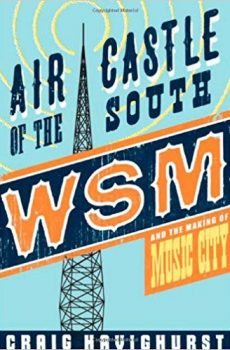
Air Castle of the South. WSM and the Making of Music City
2,095.00₹ 1,650.00₹
Started by the National Life and Accident Insurance Company in 1925, WSM became one of the most influential and exceptional radio stations in the history of broadcasting and country music. WSM gave Nashville the moniker “Music City USA” as well as a rich tradition of music, news, and broad-based entertainment. With the rise of country music broadcasting and recording between the 1920s and ‘50s, WSM, Nashville, and country music became inseparable, stemming from WSM’s launch of the Grand Ole Opry, popular daily shows like Noontime Neighbors, and early morning artist-driven shows such as Hank Williams on Mother’s Best Flour.
Sparked by public outcry following a proposal to pull country music and the Opry from WSM-AM in 2002, Craig Havighurst scoured new and existing sources to document the station’s profound effect on the character and self-image of Nashville. Introducing the reader to colorful artists and businessmen from the station’s history, including Owen Bradley, Minnie Pearl, Jim Denny, Edwin Craig, and Dinah Shore, the volume invites the reader to reflect on the status of Nashville, radio, and country music in American culture.

The age of Obama
1,395.00₹ 790.00₹
The age of Obama: The changing place of minorities in British and American society by Tom Clark, Robert D. Putnam, Edward Fieldhouse
Drawing on collaborative research from a distinguished team at Harvard and Manchester universities, ‘The age of Obama’ asks how two very different societies are responding to the tide of diversity that is being felt around the rich world. ‘Guardian’ journalist Tom Clark, Robert D. Putnam – best-selling author of ‘Bowling alone’ – and Manchester’s Edward Fieldhouse offer a wonderfully readable account. Like ‘Bowling alone’, ‘The age of Obama’ mixes social scientific rigor with accessible charts and lively arguments. It will be enjoyed by politics, sociology and geography students, as well as by anyone else with an interest in ethnic relations.
Injustice, it turns out, still blight lives of many UK and US minorities – particularly African Americans. And there are signs the new diversity strains community life. Yet in both countries, public opinion is running irreversibly in favour of tolerance. That augurs well for the future – and suggests a British Obama cannot be ruled out.

Candy Story
790.00₹ 690.00₹
Candy Story recounts a turbulent year in the life of Mia, a young woman whose apparent calm is perpetually threatened by inner doubts and outer catastrophe. Her modest dreams of happiness are dashed by the deaths of her mother, old friends, and her lover. Mia is a talented writer, the author of an autobiographical novel. Now, assailed by calamity and misfortune, she struggles with writer’s block, confounded—at least for the moment—by the senseless world around her.
Candy Story is the fourth novel by Marie Redonnet. Translations of the first three—Hôtel Splendid, Forever Valley, and Rose Mellie Rose—are also available from the University of Nebraska Press. In its unadorned prose and passionate focus on the inner life of a young woman, this fourth novel is unmistakably allied to the earlier ones. It will enthrall Redonnet’s admirers and win new ones.
Born in Paris in 1947, Redonnet taught for a number of years in a suburban lycée before deciding to pursue a writing career full time. Since her volume of poetry Le Mort & Cie appeared in 1985, she has published four novels, a novella, numerous short stories, and three dramatic works.





















